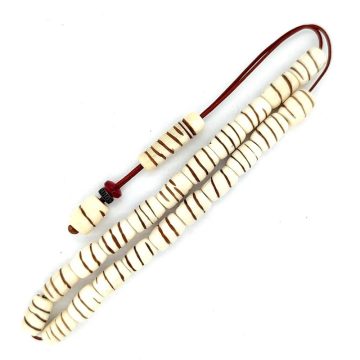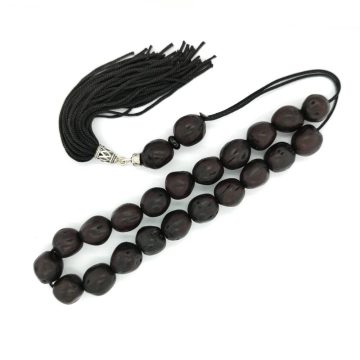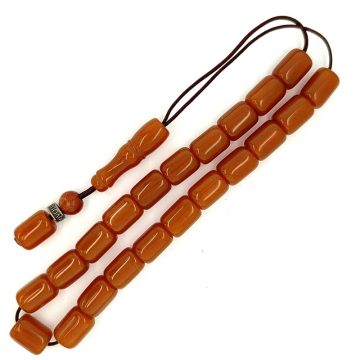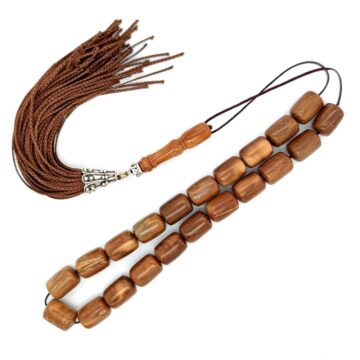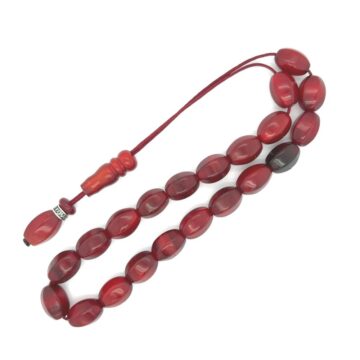Kombolois Carved camel bone white, (21 beads)
Bone is also used in the making of kombolois. A few centuries ago, people were making jewels and many other items for religious purposes. They were processing bones in a particular way creating thus pieces of art. The bones komboloys are qualitative and durable in use. The bone beads are from cattle animals that live …
KOMBOLOIS Aromatic fruit, black, 21 beads, with tassel
The fruits of plants and trees and wood as natural materials began to be used slowly, but the continuation proved that there is a particular interest in rosaries from these materials. Of the fruits of particular interest is the fruit of the Kouka tree that looks like a coconut. It is a fruit of brown …
Kombolois pressed amber (21 beads)
The laboratories, which process the amber and create the beads, collect the unexploited amber filings (process remains), as well as the unprocessed amber quantities. Afterwards, they press the above materials into moulds in high temperatures and thus create the pressed amber. Its colour varies, due to the mixed materials, the different pressure and temperature conditions. …
Kombolois cook wood (21 beads) with tassel
The plants and trees seeds and the wood as natural materials started with slow steps to be used in the making of kombolois. One of the most known woods is the Ebony-tree that is considered as the most durable wood. There is no wide variety of colours, but only black and black with brown sheens. …
Kombolois horn red tayarized, 21 Beads
The horn beads are included between those with the longer history in the depths of centuries. Hundreds years ago, people used the horns from animals in order to make items for the covering of their daily needs, for decorative but also for religious reasons. They were making tools, jewels that sculptured them with religious symbols. For the …

